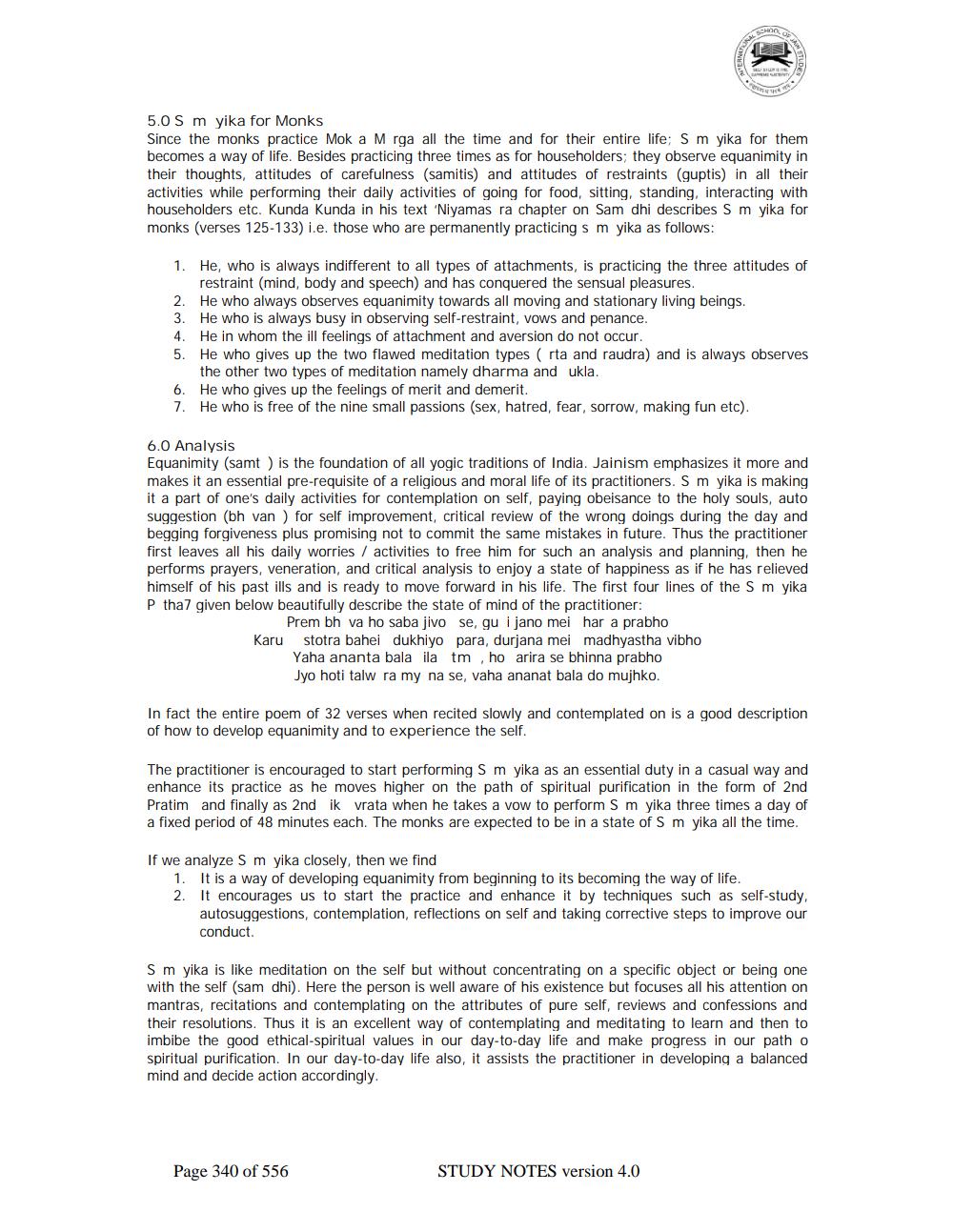________________
5.0 S m yika for Monks Since the monks practice Mok a Mrga all the time and for their entire life; Sm yika for them becomes a way of life. Besides practicing three times as for householders; they observe equanimity in their thoughts, attitudes of carefulness (samitis) and attitudes of restraints (guptis) in all their activities while performing their daily activities of going for food, sitting, standing, interacting with householders etc. Kunda Kunda in his text 'Niyamas ra chapter on Sam dhi describes Sm yika for monks (verses 125-133) i.e. those who are permanently practicing s m yika as follows:
1. He, who is always indifferent to all types of attachments, is practicing the three attitudes of
restraint (mind, body and speech) and has conquered the sensual pleasures. 2. He who always observes equanimity towards all moving and stationary living beings. 3. He who is always busy in observing self-restraint, vows and penance. 4. He in whom the ill feelings of attachment and aversion do not occur. 5. He who gives up the two flawed meditation types ( rta and raudra) and is always observes
the other two types of meditation namely dharma and ukla. 6. He who gives up the feelings of merit and demerit. 7. He who is free of the nine small passions (sex, hatred, fear, sorrow, making fun etc).
6.0 Analysis Equanimity (samt ) is the foundation of all yogic traditions of India. Jainism emphasizes it more and makes it an essential pre-requisite of a religious and moral life of its practitioners. Sm yika is making it a part of one's daily activities for contemplation on self, paying obeisance to the holy souls, auto suggestion (bh van ) for self improvement, critical review of the wrong doings during the day and begging forgiveness plus promising not to commit the same mistakes in future. Thus the practitioner first leaves all his daily worries / activities to free him for such an analysis and planning, then he performs prayers, veneration, and critical analysis to enjoy a state of happiness as if he has relieved himself of his past ills and is ready to move forward in his life. The first four lines of the Sm yika P tha7 given below beautifully describe the state of mind of the practitioner:
Prem bh va ho saba jivo se, gu i jano mei har a prabho Karu stotra bahei dukhiyo para, durjana mei madhyastha vibho
Yaha ananta bala ila tm , ho arira se bhinna prabho Jyo hoti talw ra my na se, vaha ananat bala do mujhko.
In fact the entire poem of 32 verses when recited slowly and contemplated on is a good description of how to develop equanimity and to experience the self.
The practitioner is encouraged to start performing Sm yika as an essential duty in a casual way and enhance its practice as he moves higher on the path of spiritual purification in the form of 2nd Pratim and finally as 2nd ik vrata when he takes a vow to perform Sm yika three times a day of a fixed period of 48 minutes each. The monks are expected to be in a state of Sm yika all the time.
If we analyze Sm yika closely, then we find
1. It is a way of developing equanimity from beginning to its becoming the way of life. 2. It encourages us to start the practice and enhance it by techniques such as self-study.
autosuggestions, contemplation, reflections on self and taking corrective steps to improve our conduct.
Sm yika is like meditation on the self but without concentrating on a specific object or being one with the self (sam dhi). Here the person is well aware of his existence but focuses all his attention on mantras, recitations and contemplating on the attributes of pure self, reviews and confessions and their resolutions. Thus it is an excellent way of contemplating and meditating to learn and then to imbibe the good ethical-spiritual values in our day-to-day life and make progress in our path o spiritual purification. In our day-to-day life also, it assists the practitioner in developing a balanced mind and decide action accordingly.
Page 340 of 556
STUDY NOTES version 4.0




